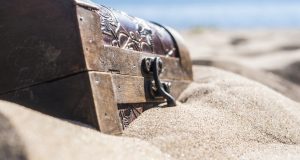NEW ZEALAND’S second biggest city was again plunged into a chaos of dust clouds, rock slides, traffic jams and collapsing buildings, after being rocked by a 5.7-magnitude and a 6.3-magnitude earthquake within 90 minutes in mid-afternoon on 13 June.
Many buildings, including churches, were damaged or have collapsed.
One elderly rest home resident died in a fall, according to police.
The quakes are the latest in a series of dozens of aftershocks following the devastating magnitude-6.3 earthquake on 22 February, when 182 people died, and a damaging magnitude 7.1 earthquake last September.
The central city is in ruins, with 900 buildings expected to be demolished.
Another 50 buildings have either fallen or will have to be demolished as a result of the latest tremors, according to media reports.
The historic ChristChurch Anglican Cathedral suffered further damage, after its spire was toppled in the February earthquake.
The city’s most famous building may be damaged beyond repair.
It lost its west wall and rose window, a symbolic icon of the city and cathedral.
Cathedral dean Peter Beck said he believed that the city’s centrepiece may have to be rebuilt, possibly at another location.
Beck said the rose window was a "very special piece of the whole building" and has been part of the cathedral’s logo, like its now-destroyed tower.
"It’s a hard time but at the same time we are an extremely resilient people.
We will live through it.
We will continue to recover and rebuild our city," Beck said.
"The cathedral in the square has been in the heart of our city almost from the beginning, but wherever the heart of the city is, that is where we will be," Beck said in a television report.
Anglican bishop Victoria Matthews said that there were questions about whether to deconsecrate and demolish the cathedral.
While the latest tremors have added as much as $6 billion to a bill already assessed at $20 billion, Matthews is more concerned about her clergy facing "exhaustion of spirit."
"People are tired.
They have been more than magnificent.
But I am hearing of a deep weariness of the soul, and I’m having to ask people to reach deep into their resources to meet yet another crisis," she told Anglican Taonga.
"We need prayer. We need prayer, because we are beyond running on our own strength."
The Catholic Cathedral of the Blessed Sacrament also had further major damage.
Concrete floors on the outside of the basilica collapsed on to the floor below, damaging the north and south arches that help support the dome.
The dome was to be lifted off in a couple of weeks; that work is now on hold.
More than 45 people were transferred to hospital, some with "moderately serious" injuries.
Two were salvaging windows from the now-collapsed St. John the Baptist Church, near the central city.
They had cuts and bruises after the only remaining wall crumbled around them and part of the roof collapsed on the church’s organ.
"Buildings were falling into the street just like they did after the February earthquake," the Rev. Peter Collier said.
Prime Minister John Key flew to Christchurch to assess the damage.
"I acknowledge that this has been a setback for the Christchurch people, but it does not lessen our resolve to rebuild," he said.
Mayor Bob Parker said the quakes were "very, very scary," and paralyzing for residents who had to attend to further damage after earlier earthquakes.
"It is ‘oh my God, we’ve just got to go back and clean this place up again,’" he said in a television report.
"It doesn’t even take a 5.5 magnitude to bring back traumatic memories.
Any quake brings it all back.
All you can do is wait.
That’s all.
You can’t move," he added.
GNS Science, the government’s geological and nuclear research centre, has estimated a 30 per cent likelihood of another 6.0 to 6.9 earthquake in the central city within the next 12 months.
 JourneyOnline
JourneyOnline






